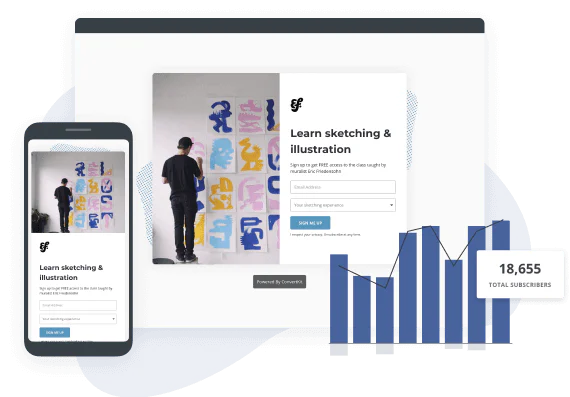In this Article
Most things you’re doing to grow your email list are probably quite hands-on.
Short-form videos, tweets, partnerships, IG stories—the list goes on and takes you hours every week.
So what can you do when you want to take it a bit slower? Should your list building slow down, too?
Thanks to search engine optimization (SEO), not at all. By optimizing your landing page for search engines, you can build a powerful asset once and keep growing as a creator regardless of your day-to-day content.
But SEO for landing pages can be challenging. If you’re not sure where to start and how to make the most out of your landing page, this guide is for you.
Do creator landing pages need SEO?
The short answer is: yes! When your landing page is optimized for search engines, it becomes a vehicle for consistent traffic and a reliable source of new email subscribers.
Without SEO, your email list growth depends on your promotional efforts. With SEO, you can grow your audience on autopilot because most of the work happens upfront, and you can reap the rewards for months and years to come.
Since SEO efforts can take a while to show results, focus on the landing pages you plan to use in your business in the long run—over six months or seasonally.
What are SEO landing pages?
An SEO landing page is a landing page specifically made to rank on search engines. It focuses on a topic your target audience frequently researches on Google.
For example, Steph Taylor, a digital launch strategist, takes one of the top spots for the “podcast launch plan” Google search with her course landing page:
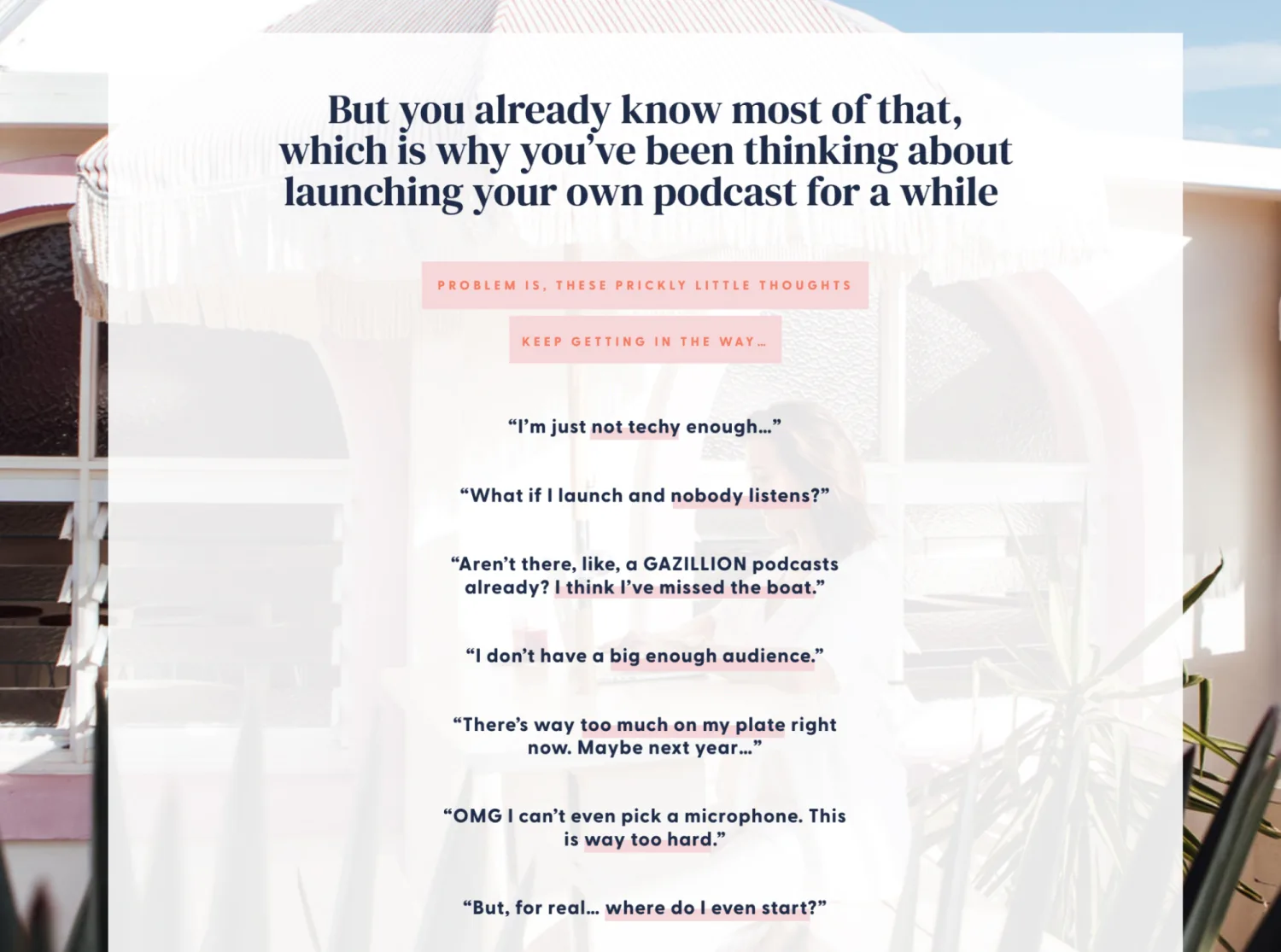
The landing page for Steph Taylor’s online course, Your A-Z podcast launch plan. Image via Steph Taylor.
Search-optimized landing pages help people see your offer—free or paid—as the right one for them, even if they haven’t heard of you before.
That’s because they dive beyond the surface level and into the core of your audience’s pain points.
Keep in mind that not every landing page is or needs to be optimized for search—more on that in a moment.
One thing’s for sure: if you want to automate your growth as a creator, landing page SEO is the way to go. Start with these simple steps:
10 steps to optimize your landing page for SEO
Here are the 10 steps for an SEO-optimized landing page:
- Determine the goal of your landing page
- Research and choose the best keywords
- Write your landing for humans, not just search engines
- Add your keywords to strategic places
- Make it mobile-friendly
- Set-up A/B testing (aka split testing)
- Publish your landing page to your own domain
- Monitor and improve your landing pages’ loading speed
- Track and understand your landing page metrics
- Build backlinks that point to your landing page
Step #1: Determine the goal of your landing page
First things first: determine whether your landing page copy will mainly focus on converting visitors into subscribers or if search engine ranking is the priority.
Although a landing page can do both things, it pays off to choose just one of these two as your goal. Here’s why.
Conversion-focused landing pages
Conversion-focused landing pages are part of a wider journey your visitor has already gone through. For example, they follow you on social media and have read several of your blog posts (or listened to multiple podcast episodes).
After a while, your content leads them to a landing page with a lead magnet that matches their needs—a workbook they can use to solve a problem, a weekly newsletter for regular inspiration, or an ebook to improve a skill.
All their interactions with your content up to that point made sure that once they’re on that landing page, signing up is a no-brainer and an obvious next step.
SEO-focused landing pages
SEO-focused landing pages match the questions and terms your target audience searches for online, which makes them longer and more detailed.
Longer copy on search-optimized pages works for two reasons:
- It gives search engines context and proof that the page matches what the visitor searched for, like subtopics and related keywords
- It shows the visitor they’re at the right place and gives them the confidence to take action and sign up
SEO landing pages are more similar to a blog post than a typical, snappy landing page. This makes them an independent traffic source for your email list, products, and business.
Step #2: Research and choose the best keywords
In SEO, keywords are the words and phrases people type into search engines. To rank in search, your landing page needs to align with those keywords.
Of course, the keywords you think your audience is using to research a topic might not be 100% accurate. That’s why it’s worth leaning on keyword tools like Ahrefs, Semrush, and Google Keyword Planner.
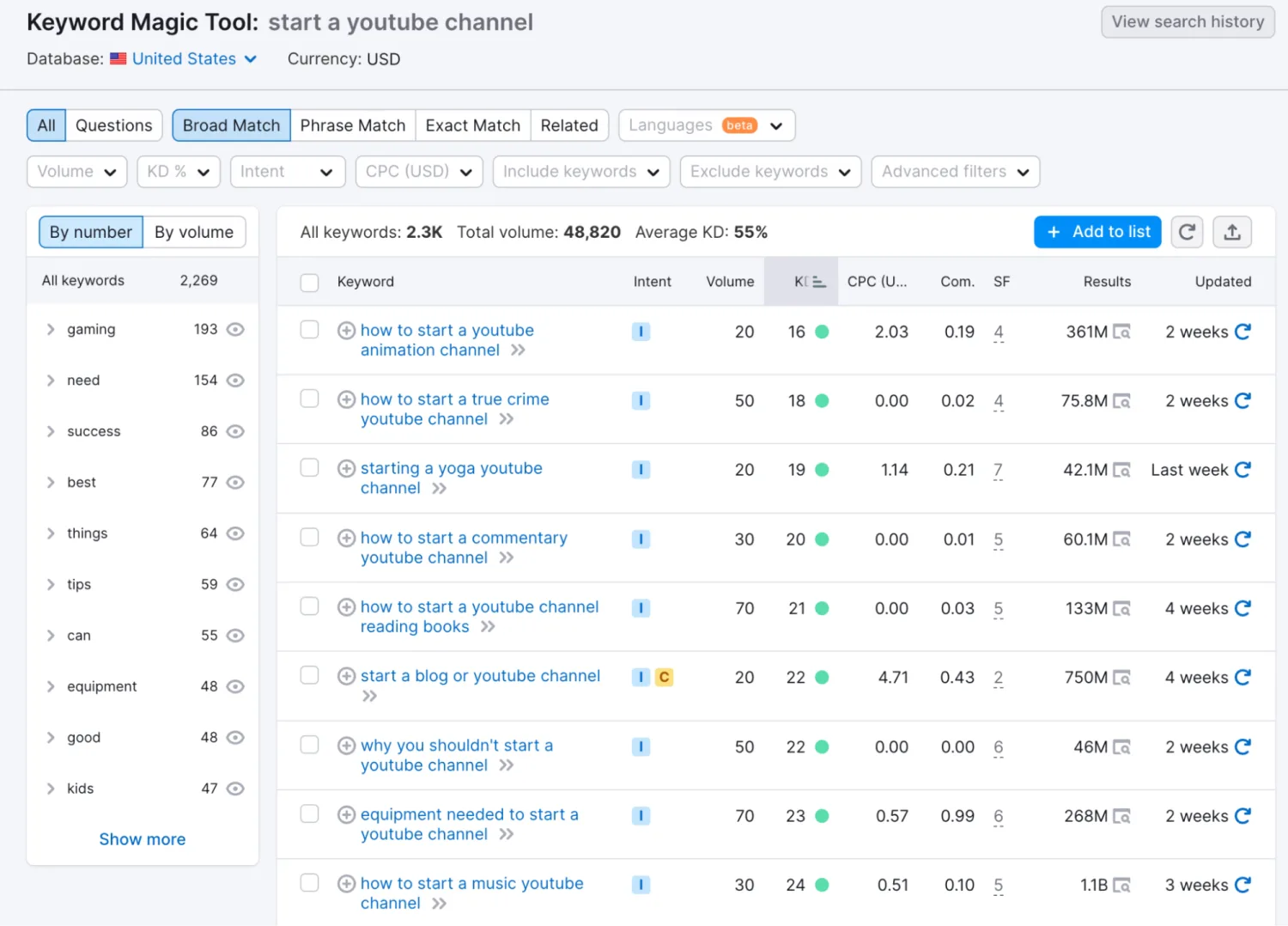
A report in Semrush for the keyword ‘start a youtube channel’
They’ll give you insights like:
Search intent
Search intent is the goal a user has when typing something into a search engine.
They might be looking for an answer (informational intent), a specific website (navigational), a range of options as a solution to their problem (commercial), or to make a purchase (transactional).
While SEO tools often give this information (see Semrush screenshot above), search intent can be more specific than that. For example, the “meal plan template” implies the search for an easy-to-use printable or digital resource rather than a course, a book, or an ultimate guide about meal planning.
What already ranks for your target keyword is the clue as to what search engines see as the intent behind that keyword.
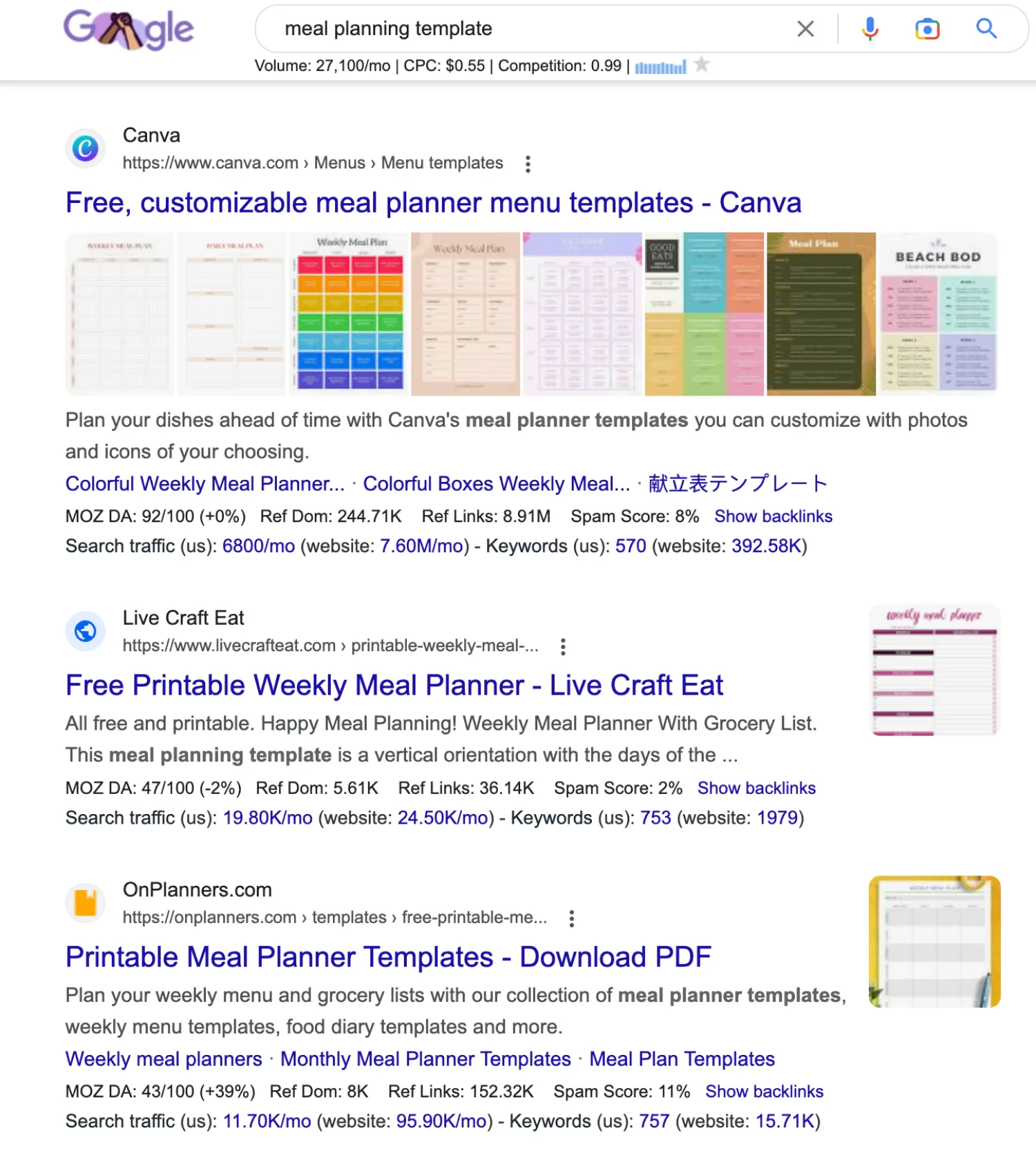
Search results hold clues about the search intent for the keyword you’re targeting
Traffic potential
The number of searches a keyword gets shows you the traffic potential if your landing page grabs one of the top spots. This is useful because you might think a keyword is popular, but an SEO tool could reveal it barely gets a few searches per month.
You can then use that same tool to learn which related terms people type into search engines so you can focus on those keywords instead.
Ranking difficulty
More search volume doesn’t instantly mean more traffic for you. Keywords with thousands of monthly searches are usually incredibly difficult to rank for, so use an SEO tool to find keywords with the sweet spot of lower ranking difficulty and some traffic potential.
For example, according to Semrush, it is very difficult to rank for “youtube starting a channel,” but quite easy to rank for “starting a yoga youtube channel” with a similar traffic potential.
Step #3: Write your landing page for humans, not just search engines
SEO-focused landing pages tend to cover more details, subtopics, and context than those focused purely on conversions.
That’s what makes them comprehensive and relevant—not just for the search engines but crucially for your visitors.
Once you write your landing page copy, run through these questions to ensure a smooth journey for the people who land on it:
- Does the information on the page flow in a logical order?
- Does the copy answer potential questions a visitor may have?
- Is there an obvious and clear call-to-action?
- Does the visual context—colors, images, videos—match the message of the landing page copy?
- Will your target visitor feel like they’re in the right place once they go through your landing page?
Make sure the answer to all questions is a resounding ‘yes’ before you proceed.
Step #4: Add your keywords to strategic places
What are all the places to consider adding your keywords to before you publish your landing page? Consider these:
URL
This one is straightforward: if your landing page is about a podcast launch plan, have podcast-launch-plan in your URL.
Headers
The main header and any relevant subheaders should tie back to your keywords. Subheaders help you break your content down and make it easier to digest—and clarify the focus of your page to search engines.
Content
You already know you should include your keywords in your core content, but don’t also forget to add related keywords and subtopics to ensure search engines ‘understand’ what your landing page is about.
For example, a landing page about a specific hairstyle might also mention haircare products, techniques, tools, and face shapes. One about home workouts may include terms like home gym, equipment, cardio, and bodyweight.
Make sure to include your main and related keywords wherever it makes sense naturally.
Meta title and description
Meta title and description are what Google and other search engines will display in search results. This not only clarifies the topic of your landing page, but can help entice people to click on your result instead of a different one.
Image alt text
Google can’t ‘see’ your image, so it leans on the image’s alt text to understand what’s on it. It’s also what a device will display if it doesn’t load an image and what a screen reader will read out to visually impaired users.
Use keywords in your image alt text to create a better user experience and to increase your chances of ranking your landing page and its images highly in search.
Step #5: Make it mobile-friendly
Around 60% of all website traffic happens on mobile devices. If a user’s experience of your landing page is poor when they’re on a smartphone, they’ll bounce—and possibly never return.
If you’re not a web designer or don’t have coding skills, making your landing page responsive might prove to be tough. Consider using a landing page builder or pre-built templates—like the ones from Kit—to have a responsive landing page straight out of the box.
Step #6: Set-up A/B testing (aka split testing)
The first version of your landing page might not be the one that will bring you the best results in the long run.
That’s why it’s worth running landing page A/B tests. These are experiments that compare two versions of a landing page to learn which one does a better job in search and converts the most visitors.
You can test:
- Headlines and copy
- Visuals like images and videos
- Social proof
- The number of fields in your opt-in form
- Call-to-action (CTA) design and/or copy
To start, ideally only run a test for one change at a time, like only the headline or CTA while keeping the rest the same. With time, you can experiment with more elements at once.
You can use a tool like VWO, Optimizely, or AB Tasty to run your tests, or you can use a landing page tool like Kit to build two versions of the same landing page.
Step #7: Publish your landing page to your own domain
If you’ve built your landing page directly on your website, you’ve already done this.
But if you’re using a landing page builder like Kit, your landing page URL will default to a third-party domain, like this example from business coach Sophie Clyde-Smith:
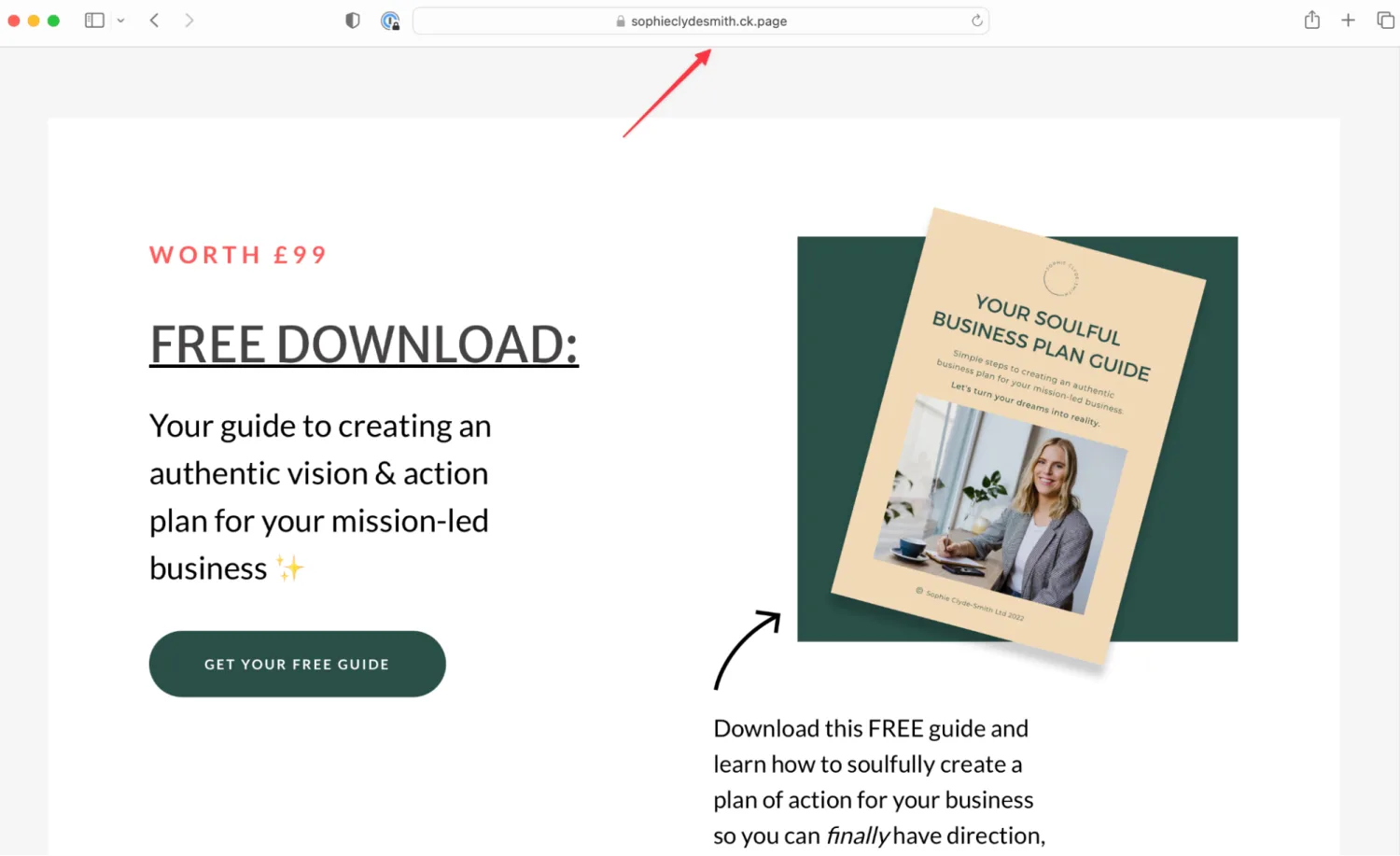
The provider-specific landing page URL—in this case, one from Kit. Image via Sophie Clyde-Smith.
If you can, tweak your landing page settings to host it on your domain. This infuses trust, shows visitors they’re in the right place and helps your visibility in search.
This is easy to do in Kit. Head to Settings > Domains, then click Add a Custom Domain. Follow the instructions to input either a top-level domain or a subdomain (for example, pages.yourdomain.com) and then connect it with your domain provider.
In the end, you’ll have a URL that looks like this:
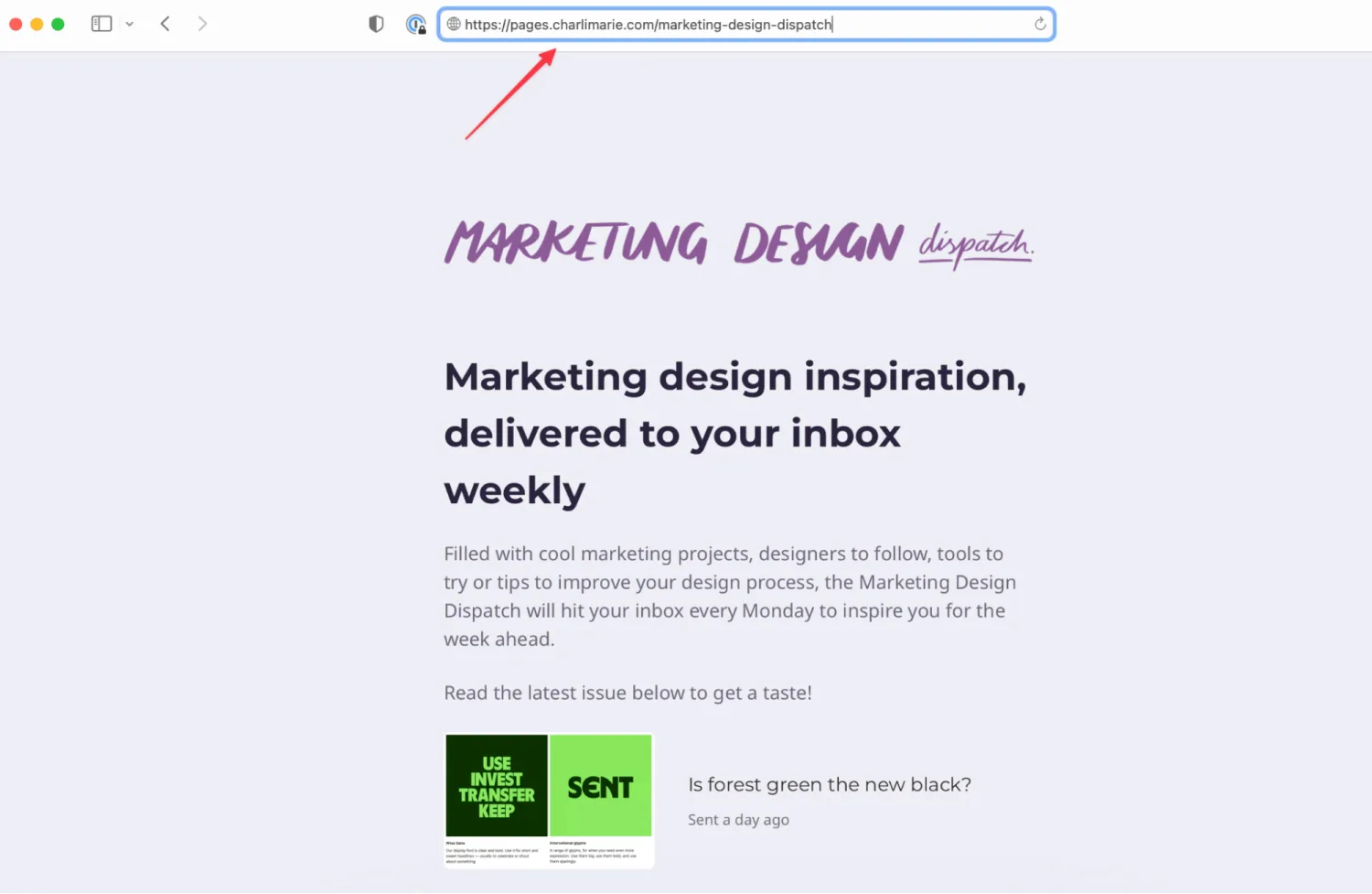
Example of a landing page on a custom domain. Image via Charli Prangley.
Step #8: Monitor and improve your landing pages’ loading speed
A fast-loading page makes both humans visiting it and search engines ranking it happy. It’s the baseline of a great user experience, both on mobile and desktop devices.
And one study after another shows that a slow-loading page reduces the visitor’s trust and likelihood to buy—and increases the chance they’ll bounce (i.e. leave the page without taking any action).
The easiest way to see how your landing page is doing when it comes to loading speed is Google’s free tool, PageSpeed Insightsl:
andingPageSpeed Insights page with scores, analysis, and improvement recommendations. Image via PageSpeed Insights.If your score is below 90, you can find recommendations to improve it on this page, like reducing your image size, adding alt text to your images, and including a meta description.
Step #9: Track and understand your landing page metrics
Unless you sit next to a visitor as they navigate your landing page, you can’t really know how well your landing page is doing its job. You can only guess, which usually isn’t helpful.
That’s what landing page metrics are for. They show you what your landing page visitors are doing and indicate potential gaps in their experience. Pay attention to these five metrics:
- Pageviews: how many people visit your landing page per day, week, month? This is your baseline landing page metric.
- Conversion rate: of all the people that visit your landing page, how many are completing the signup process? In the broader marketing field, the average conversion rate varies from 2% to 3%, but landing pages done right can go well into the double digits.
- Bounce rate: how many people leave your page before doing anything else on it, like clicking a link or filling out a form? This is effectively the inverse of your conversion rate.
- Time on page: how long do people spend on your page before taking action or leaving? The ideal time will be relative to your landing page’s length and complexity.
- Traffic source: where are your visitors coming from, and how does it affect their behavior on your landing page? For example, visitors from Google might be converting better than those from Pinterest.
If you’re using Kit, you can connect your landing pages to Google Analytics through the SEO & Analytics tab in each page’s settings.
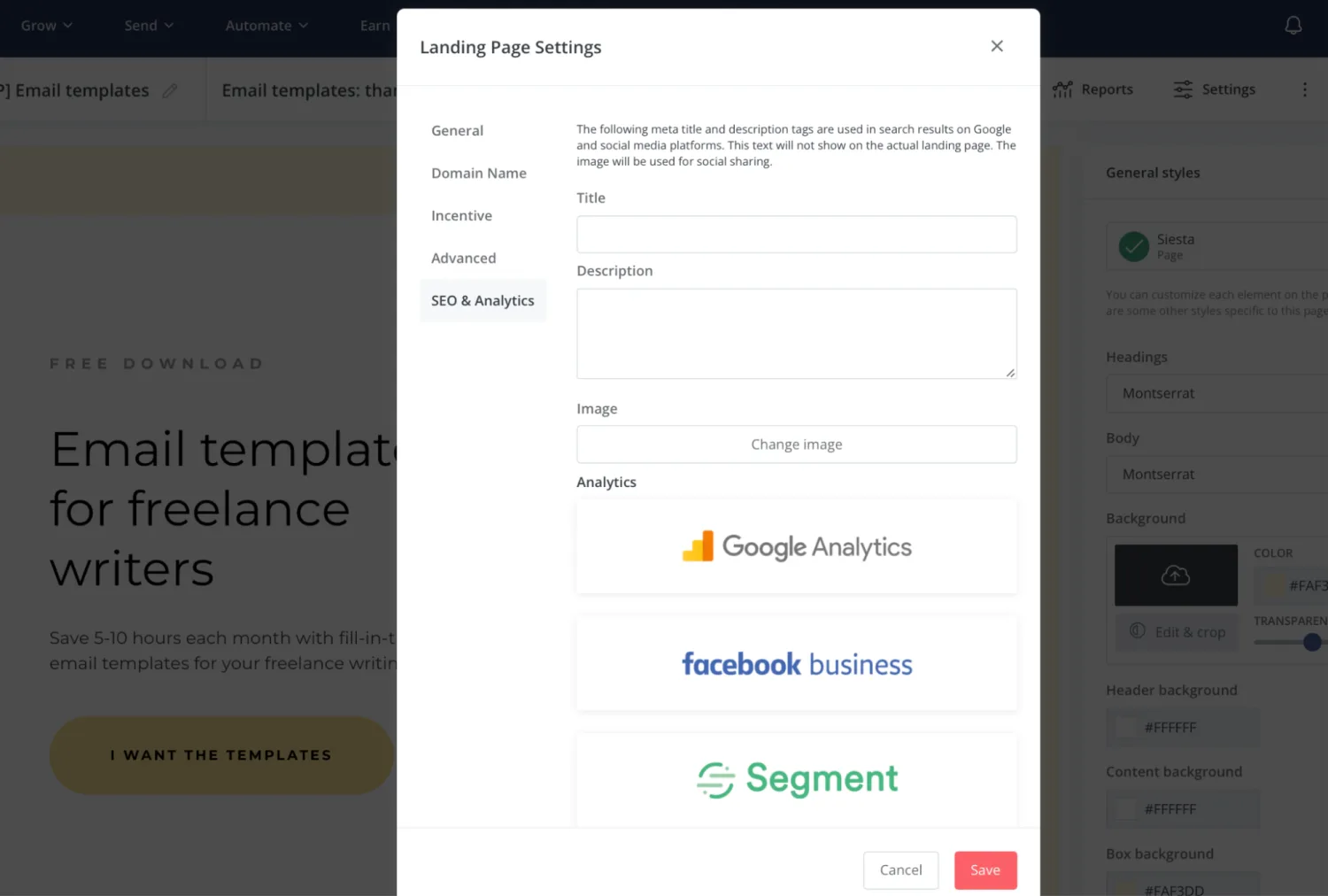
The SEO & Analytics tab for a specific landing page in Kit
Monitor these metrics in a spreadsheet on a weekly basis so you can spot growth, patterns, and new opportunities.

Landing page views and conversion rates in Kit
For SEO efforts specifically, take note of how your metrics change for search traffic and use that knowledge to plan future content related to your landing page.
Step #10: Build backlinks that point to your landing page
Finally, links to your landing page from other websites are an important element of your success. Not only do they send referral traffic your way—they show search engines you’re a relevant resource about a topic you cover on your landing page.
There are many ways to build backlinks towards your landing page and your offer, but the easiest ones include:
- Partnering with creators and brands on assets like blog posts, webinars, etc. that link to your landing page
- Writing guest posts for relevant publications
- Being interviewed on a podcast, where your bio or relevant links mention your landing page
Start with one link building approach and build from there—the long-term results are what you’re after.
Use SEO to drive free traffic to your landing page
Optimizing your landing page for search can unlock and drive your email list growth for months and years to come.
It’s the way to create content once and reap the rewards in the long run. To make it happen, you need the right tools in your toolbox—and Kit is exactly that.
Start from the landing page template library to build, write, test, and optimize your landing page for the maximum search potential—and turn it into an invaluable asset in your creator business.


